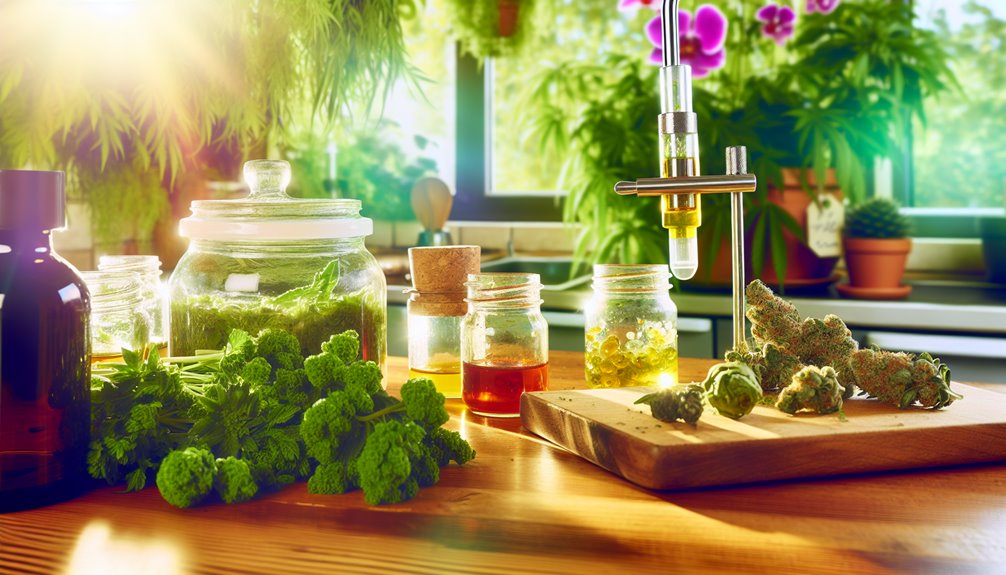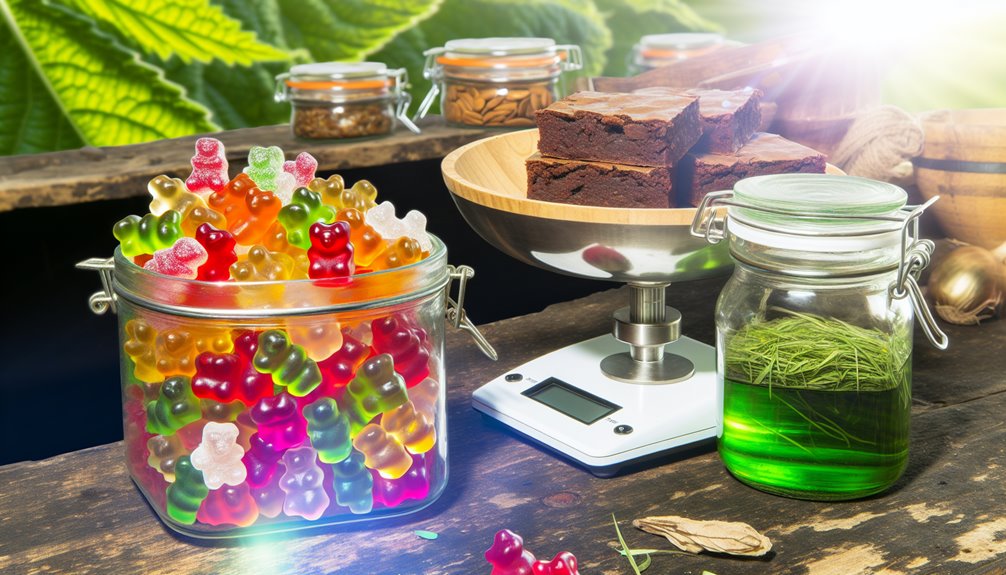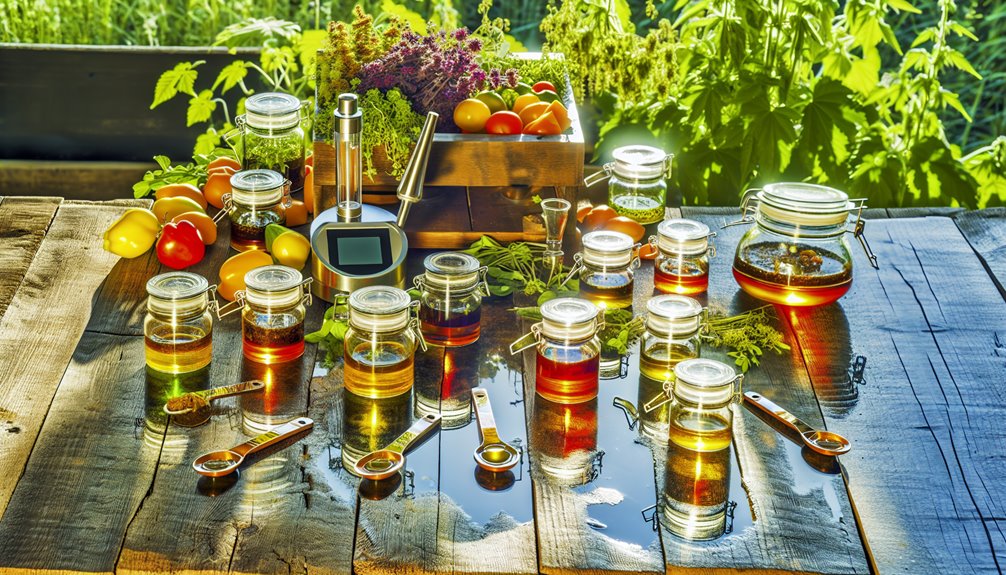Like homebrewing’s early days, you now get clear guardrails: 2025 reforms expand what you can make at home—edibles, rosin, kief, ice‑water hash, and oil infusions—while capping plants per household, requiring batch logs, calibrated scales, child‑resistant labels with mg/serving, and secure storage. Only food‑grade solvents are allowed, with ventilation and electrical safeguards mandated. Potency must be conservatively calculated, even for sharing. If you want to stay compliant and cost‑effective, here’s what changes your workflow next.
What Changed in 2025: Home Production Rules at a Glance

Although headlines focused on retail reform, 2025’s biggest shift for home producers is a tighter, clearer rule set: states codified plant caps by household (not per adult), linked possession limits to harvest weight, and expanded “closed, locked, and not visible” storage mandates. You’ll see policy changes standardize batch logging, require equipment disclosures for solvent-based concentrates, and set potency testing thresholds for shared edibles made at home. Most jurisdictions recognized small-batch charitable production with narrow license exemptions, but conditioned them on safety training and traceable donation records. You should plan for utility-impact audits, ventilation specs, and waste-destruction logs to meet neighborhood and public-health goals.
Legal Limits and Compliance for Personal Use and Sharing
With 2025’s rule set tightened around plant caps, batch logs, and storage, you now need to map those changes to day‑to‑day limits on what you may grow, hold, and share. Anchor your plan to possession limits: verify the household cap, per‑person maximums, and any conversion factors for infused products. Keep batch logs with harvest dates, weights, potency, and transfer records. Label containers with net weight and date; segregate juvenile plants from mature counts. For noncommercial gifting, confirm age checks, quantity per transfer, and annual aggregate thresholds; never accept remuneration. Store locked, odor‑contained, and transport sealed. Document disposal. Audit monthly. Stay compliant.
Safe, Permitted Extraction Methods You Can Use at Home

Since home extraction sits under stricter 2025 rules, focus on methods regulators explicitly permit without a commercial license: food‑grade solvent infusions (glycerin, MCT, olive oil), dry sift/kief, ice‑water hash, and rosin pressed with heat and pressure. You’ll align with safety priorities—nonvolatile media, closed handling, and odor control. Document batch weights, decarb status, and yield; many jurisdictions expect retention of logs for 12–24 months. Keep potency conservative; titrate by mass, not guesswork. If your jurisdiction allows cold ethanol for tinctures, verify proof, denaturant status, and maximum volume caps. For rosin pressing, follow temperature/pressure ceilings and comply with local electrical safety codes.
Equipment: Must-Haves, Nice-to-Haves, and What to Avoid
Even as home extraction stays legal only within narrow lanes, your equipment choices determine compliance, safety, and repeatability. Prioritize tools that meet food-contact standards, UL/CE certifications, and local fire codes. Avoid improvised glassware, non-rated heat sources, and unventilated setups.
- Must-haves: calibrated metering scales (0.01 g resolution), induction hot plate with temperature limiter, stainless vessels, HEPA workspace, GFCI outlets, and labeled storage. Document serials and cleaning logs.
- Nice-to-haves: silicone molds (FDA-grade), magnetic stirrer, IR thermometer, mesh filters, and odor control. They improve consistency and neighbor relations.
- Avoid: open-solvent rigs, plastic cookware, unknown silicone, and non-grounded appliances. Risk equals liability.
Potency Basics: Calculating Dose for Edibles and Concentrates

Although flavor and texture get attention, regulators care first about dose accuracy. You’ll meet 2025 thresholds by converting lab potency into milligrams per serving. Multiply flower or concentrate potency (%THC or %CBD × 10) by grams used to get total mg cannabinoids, then divide by batch yield for mg per unit. Use serving calculators to model target ranges (e.g., 2.5–10 mg THC per serving) and cap variability under ±10%, mirroring common state tolerances. Track decarboxylation losses (typically 10–20%) and infusion efficiency (60–90%) to avoid overestimation. Prioritize microdosing strategies for vulnerable populations, titrating up only after 24 hours to protect consumers.
Labeling, Storage, and Child-Resistant Practices
Because compliant packaging underpins consumer safety and market access, you should align labels, storage protocols, and child-resistant features with 2025 cannabis rules that mirror food, supplement, and poison-prevention standards. Use plain language warnings, dosage units, batch ID, manufacture/expiry dates, and contact info. Prioritize childproof labeling and opaque storage to reduce attraction and light degradation. Keep records to prove conformity.
1) Label: list cannabinoids by mg/serving, universal THC symbol, allergen statements, QR code linking COA.
2) Package: certified child-resistant, tamper-evident, resealable, non-appealing.
3) Store: locked, opaque storage, ≤25°C, humidity-controlled, segregated from non-cannabis foods.
Flavor and Consistency: Decarbing, Infusion, and Refinement Tips

With labeling and storage protocols in place, you can now standardize flavor and texture by controlling decarboxylation, infusion parameters, and post-processing. Apply temperature control: 105–120°C for 30–60 minutes decarbs with minimal terpene loss; verify with batch logs. For infusion, target 70–85°C, maintain uniform agitation, and document oil-to-biomass ratios. Prioritize terpene preservation using sealed vessels, inert gas purges, and rapid cooling. Refine with fine filtration (5–20 microns) to remove chlorophyll and waxes; use winterization only when potency and clarity metrics justify it. Calibrate thermometers monthly, validate time-temperature curves quarterly, and align SOPs with 2025 potency and contaminant thresholds.
Cost-Saving Strategies and Budget Build-Outs
Even on a lean budget, you can cut unit costs by prioritizing capex that shortens cycle time, reduces yield loss, and meets compliance out of the gate. Anchor every purchase to throughput per watt, per square foot, and per labor hour. Use bulk sourcing and modular build outs to phase spending without sacrificing safety or audit readiness.
1) Standardize SKUs: select multipurpose vessels, gaskets, and filters to reduce spares, simplify SOPs, and lower QA sampling costs.
2) Automate chokepoints: timers, PID controllers, and closed-loop airflow that trim rework and batch variability.
3) Co-op buying: pool demand for consumables, calibration, and waste haulage to secure volume pricing and regulatory-grade documentation.
Community Etiquette, Transport Rules, and Record-Keeping

Although norms vary by jurisdiction, you’ll stay compliant and welcome in the community by following three pillars: respect local consumption rules, obey transport limits, and maintain verifiable records. Align sessions with neighborhood norms: quiet hours, odor control, and guest caps. When moving products, honor travel limitations: sealed containers, passenger-area bans, and weight thresholds. Use route logs to prove purpose and timing. Build documentation habits: batch IDs, yield weights, infusion ratios, testing dates, and disposal notes. Preserve chain of custody from harvest to handoff with tamper-evident labels and signatures. Audit monthly; archive digitally for three years. When uncertain, defer to stricter guidance.
Conclusion
As we gear up for the exciting changes coming in 2025, I hope you feel empowered to take on the homegrown possibilities with confidence! At Fells Point Cannabis Docs, we’re here to support you every step of the way. If you have any questions or just want to chat about the new DIY opportunities, we’d love for you to stop by our office or give us a call at (410) 401-4200. Our team is always ready to help you navigate this journey with warmth and expertise. We can’t wait to see you!
